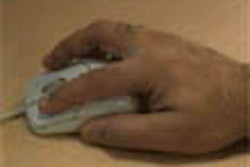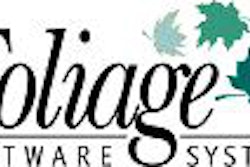The use of nighttime teleradiology providers (NTP) can be an effective means of handling after-hours reading of imaging studies, according to Dr. Andrew Wagner of Rockingham Memorial Hospital in Harrisonburg, VA.
"Our group has been using an NTP service for 18 months with a great deal of satisfaction," Wagner said.
Wagner discussed the use of NTPs and the problem of increasing demand for after-hours imaging studies in an article in the Journal of the American College of Radiology(May 2004, Vol. 1:5, pp. 351-355).
Wagner's radiology group employs an NTP service based in Australia to cover CT, MRI, ultrasound, and nuclear medicine studies performed between 12 a.m. and 7 a.m. A radiologist is on call to handle the occasional plain-film request or interventional case, and radiologists are now called after hours no more than once or twice a month, Wagner said.
After beginning the service, the group had a number of cases that were delayed, which led to complaints from the emergency physicians. It turned out, however, that the delay was due to the group's technologists or file-room staff, Wagner said.
"We still will get an occasional late interpretation on nights when the NTP is getting an
unexpectedly large number of studies from all the hospitals where it provides service, or
if they are understaffed due to illness or injury," Wagner said. "Should the NTP service be down, or the readings delayed, there is always a radiologist from our group who can be called, although this has rarely been necessary."
The group has also noticed that its radiologists' stress levels have diminished, while their daytime efficiency has improved. Despite an increasing number of radiology studies, many members in the group reported feeling they were actually doing less, a sign of increased efficiency and general happiness, Wagner said.
"Family time has improved," he said. "We no longer awaken our children and spouses with a beeper all night and our families like having us home at night, every night."
The group has also been satisfied overall with the quality of the interpretations, as well as responsiveness to any concerns. The few cases where the group has not agreed with the NTP's diagnosis are not out of proportion to the intraobserver variability among radiologists as a whole, Wagner said.
In addition, Wagner said there's an inherent benefit in essentially providing double-reads of all of the scans sent to the NTP service, as there have been cases where a group member may have missed a finding that was seen by the NTP radiologist.
The group has also found that the NTP service has aided recruitment for open positions, as there is essentially no night call. For a few years prior to securing the service, the group had been unable to find radiologists to fill two positions, Wagner said.
"Within six months of beginning NTP coverage, the positions were filled, and while both radiologists state that the presence of an NTP service was not the only factor in their decision to join our group, they agree that it was a major one," Wagner wrote.
Looking ahead, however, Wagner said there will likely come a time when the costs of the NTP service will outweigh the benefits, and that alternative methods of after-hours coverage may be needed. Once the volume of nighttime work justifies the presence of a full-time radiologist, it would become cost-effective for the group to hire someone for night coverage. However, that would entail reverting back to a system judged unpalatable by some of the group's radiologists, Wagner noted.
Another alternative could be the development of a cooperative regional NTP service among a number of groups, allowing for nighttime coverage while decreasing the number of nights on which each radiologist takes call.
"This would allow many of the benefits that NTP services provide at a lower cost," he said. "Even here, however, there are numerous potential problems and negotiations that would have to occur on how to handle the legal structure, regulatory compliance, the location at which readings would occur, billing and collection mechanisms, and how to divide revenues and costs."
By Erik L. RidleyAuntMinnie.com staff writer
May 3, 2004
Related Reading
Survey says rads are working harder for less, April 15, 2004
Teleradiology firms obtaining own JCAHO accreditation, January 20, 2004
High-volume teleradiology brings substantial benefits, September 19, 2003
Overseas teleradiology faces legal hurdles, February 21, 2003
Imaging passage to India sparks outsourcing controversy, January 23, 2003
Copyright © 2004 AuntMinnie.com

















